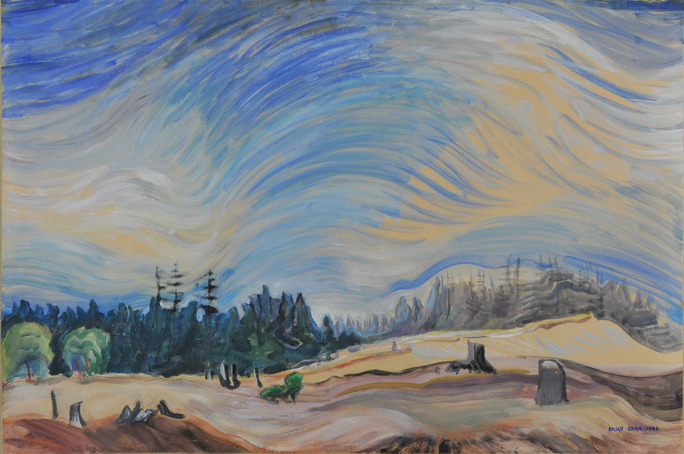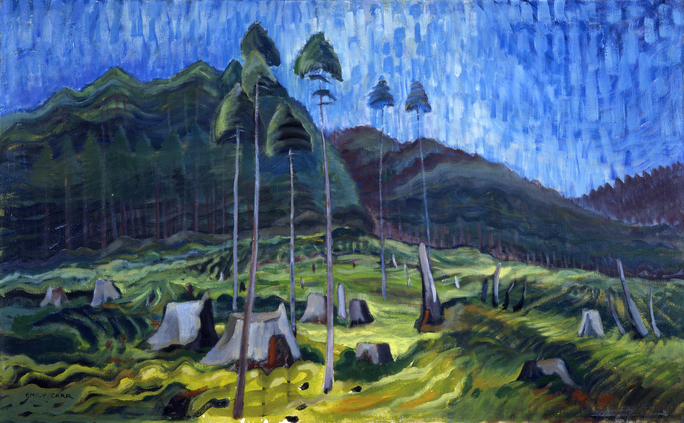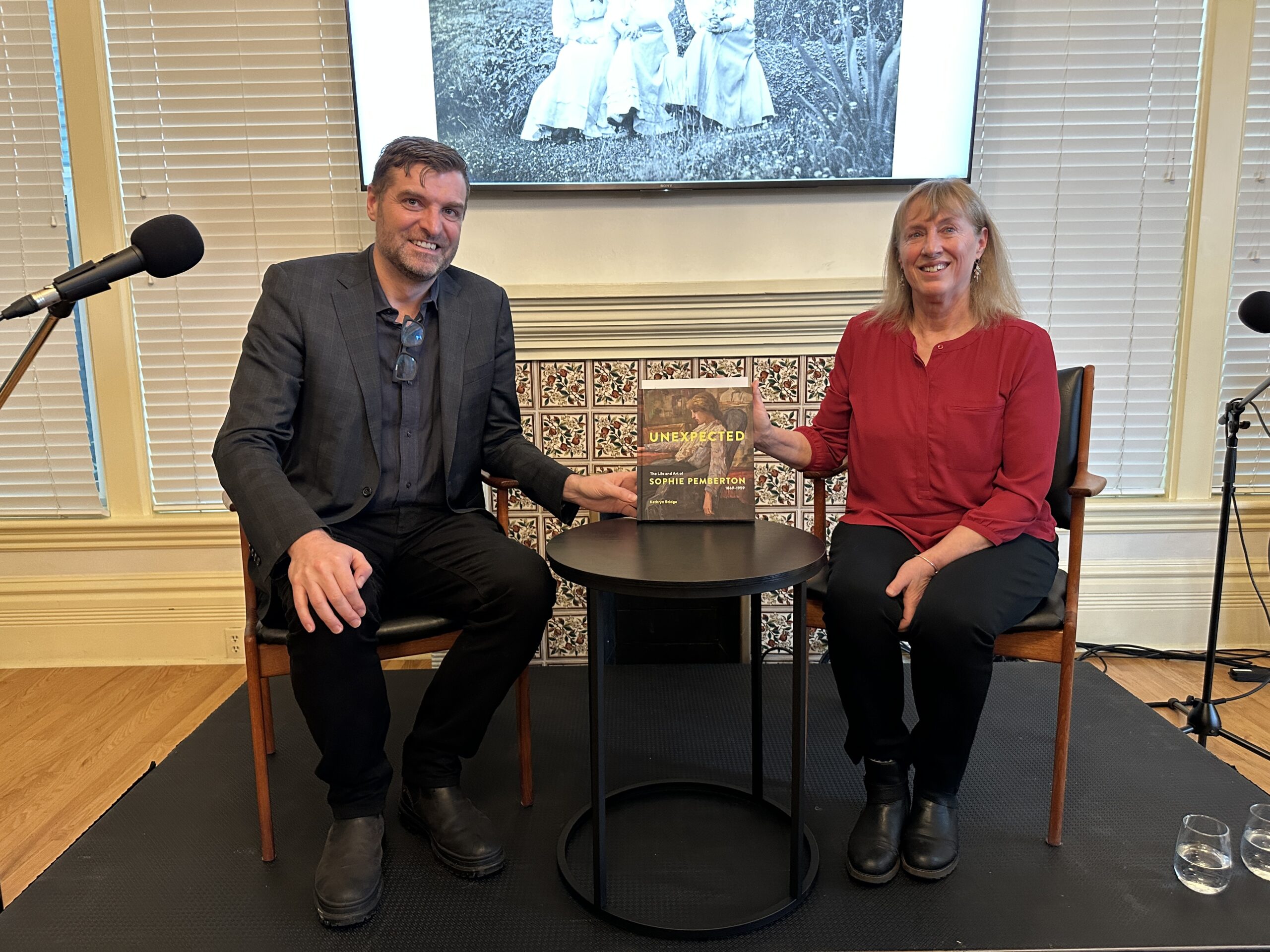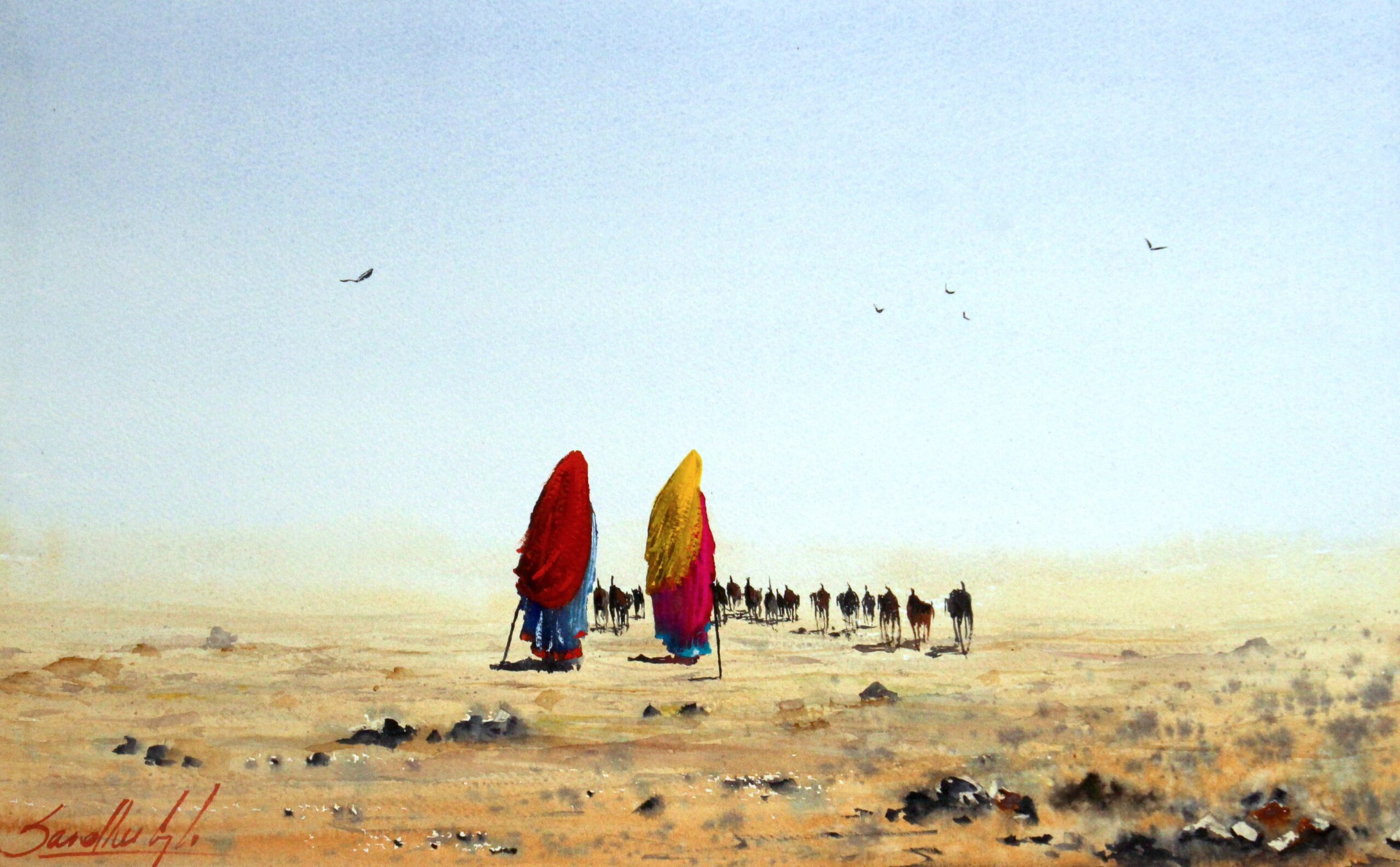Emily Carr’s repertoire of artworks covers a wide range style and content as she experimented and moved through different phases over her many years of practice. However, at the root of her entire oeuvre is an unwavering love of nature and the landscapes that surrounded her.
Featured above: Emily Carr | Deep Woods | 1936 | Oil on paper | 89.6 x 59.6 cm. | Gift of Flora Hamilton Burns and Patricia Keir in memory of their parents, Mr. and Mrs. Gavin Hamilton Burns | 1994.055.005
From her early watercolours of outdoor locations around Victoria to her mature paintings that embody her spiritual connection to the forest, it is evident that Carr thought and felt deeply about the relationship between humans and nature.
Over the years, the Art Gallery of Greater Victoria’s small but important collection of Emily Carr paintings and drawings has formed the foundation of several exhibitions, each examining her life and work from a different viewpoint. Picturing the Giants examines her work through the lens of her increasing interest in environmental issues.
A journal entry dated to 1935 expresses the contradiction Carr sees between the spiritual and utilitarian value of trees:
“Growth had repaired all the damage and hidden the scars. There were second-growth trees, lusty and fine, tall-standing, bracken and sword ferns, sallal, rose and blackberry vines, useless trees that nobody cuts, trees ill-shaped and twisty that stood at the foot of those mighty arrow-straight monarchs long since chewed by steel teeth in the mighty mills, chewed into utility, nailed into houses, churches, telephone poles, all the “woodsyness” extracted, nothing remaining but wood.” Emily Carr, “A Tabernacle in the Wood, 1935”, Hundreds and Thousands.
Although the quote laments the destruction of the forest, Carr also describes a belief that the relationship between cutting and regrowth could be well managed. Picturing the Giants will also look at the status of ancient, old-growth forests of British Columbia and the region in present times, and will ask the question, “What would Carr think of today’s treatment of our forests?”

In the final 15 years or so of her life, Carr focussed her attention on the landscapes of B.C., finding inspiration in the rainforests, the shorelines, and skies of southern Vancouver Island. In particular, the forests dominated her paintings, providing the catalyst for her personal expression. Trees, the towering giants of the rainforest, became the main characters in her paintings and became an expression of the uplifted spirit she experienced in the presence of nature. Her sweeping and active brushwork and bold abstracted forms reflect a modern approach to art as well as the joy she found in nature and in the act of painting.
In June 1936, Emily Carr set up camp for a month of sketching en plein air in Metchosin just west of Victoria. Her trailer (nicknamed the “Elephant”) was situated in a field overlooking the vase gravel pits that still exist there today. She struggled to find beauty even in this landscape where “nature has not had time to heal the scars and holes yet.” In her journal she describes her attempt to make a painting with meaning from this scarred gravel pit landscape:
“I painted this evening. Not greatly successful, but a beginning, and the palette set. It was a mellow, high-keyed night with no clouds, only a few white streaks sideways. A slash of blue sea and an impossibly glowing, gray-green stretch of grass with two stubs and a bush. The predominating characteristic here, perhaps is space, the great scoop of the sea (trees are not close), wide patches of indescribable, lit-up, very live grass, thin, fine stuff that quivers over the earth, not luscious, luxuriant growth.” Emily Carr, June 5, 1936, Metchosin.

Carr’s love for the British Columbian landscape is evident in the painting Odds and Ends, even in a scene that for some viewers might seem compromised – that of a clear-cut forest. Here, stumps in the clear cut forest rise above undergrowth like tombstones mourning the loss of the trees. However, the sadness is contrasted with the uplifting verticals of the left-over seed trees, the vibrating sky, and the undulating brush strokes of the forest backdrop, all of which celebrate Carr’s spiritual connection with nature and bear witness to her belief in regeneration.
Picturing The Giants: The Changing Landscapes of Emily Carr | June 10 – September 4, 2017 | Curated by Michelle Jacques | Pollard Gallery



